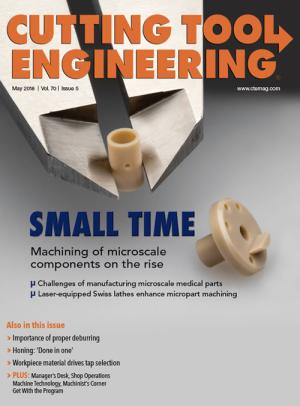I don’t get industrial suppliers. I truly believe that some just don’t care about their customers. Yet, collectively, customers are their lifeblood. Suppliers don’t get it—how to treat customers—and I don’t get their attitude, and sometimes I don’t even get their product!
I’ll share an example of being inadequately served by a supplier, an abrasives manufacturer that has several production facilities. The company that I work for normally spends more than $20,000 per year on the manufacturer’s grinding wheels. Fine wheels, they are. We recently purchased a new OD grinder for our facility. Before the order was placed, we were getting delivery quotes of 6 to 8 weeks. When we had the machine quoted, lead time increased to 9 to 12 weeks. OK, I can accept that.
I was then notified by our distributor that the wheel manufacturer was increasing the price 2 percent and the lead time to 16 to 18 weeks. I like that: Pay more, and wait longer.
When the machine order was placed, I expected delivery of the wheels by April 26. Then I was notified that the wheels were an additional 12 weeks out, with delivery by June 11, or 6 months from the date of order. So we had almost $400,000 worth of grinder and accessories waiting on a $1,400 wheel. We decided to go into production with a narrower wheel that the grinding machine builder provided. I am now in contact with a competing wheel manufacturer and will order one of its wheels regardless of lead time.
A second example occurred last year. I needed a new pneumatic screw thread installation tool and chose a name brand. I was quoted a price and delivery date. The price was what I expected. Delivery, on the other hand, was 12 weeks. You would think that this type of tool would be stocked on the shelves. However, each and every one is built to order. So much for just-in-time for the customer. At least the company didn’t extend the delivery on me.
Another classic example involves a prominent cutting tool manufacturer. In the past, we’ve had the toolmaker design and build special indexable drills, in addition to purchasing standard tools for selected legacy parts. To makes things easier when ordering a special, I provide the company with its own drawing marked with a new diameter or length, or both.
Typically, I send a request for a quote to the distributor, which forwards it to the manufacturer. I usually wait a few days before contacting the distributor to check on the progress of the quote. This particular time, almost 3 weeks later and after sending reminders every few days, I finally received the quote.
Price—not bad. Delivery—45 working days, or 9 weeks! Business must be good. So the combination of RFQ and delivery was 12 weeks. It’s time for me to find other manufacturers that have shorter lead times.
I feel like I’m back in the ‘60s and ‘70s, when OEMs thought they were the only game in town. They had a take-it-or-leave-it mentality. Their customers just took it.
Today is a different day and age. My customers expect their order—our product—within a couple of weeks. If it takes longer, they’ll take it—the first time. But the second time, they’ll go to the competition.
As for my suppliers, don’t take me for granted or assume I’ll do nothing. If you think I’m just sitting with bated breath for you to deliver when you want, you’re sadly mistaken.
Related Glossary Terms
- grinding
grinding
Machining operation in which material is removed from the workpiece by a powered abrasive wheel, stone, belt, paste, sheet, compound, slurry, etc. Takes various forms: surface grinding (creates flat and/or squared surfaces); cylindrical grinding (for external cylindrical and tapered shapes, fillets, undercuts, etc.); centerless grinding; chamfering; thread and form grinding; tool and cutter grinding; offhand grinding; lapping and polishing (grinding with extremely fine grits to create ultrasmooth surfaces); honing; and disc grinding.
- grinding machine
grinding machine
Powers a grinding wheel or other abrasive tool for the purpose of removing metal and finishing workpieces to close tolerances. Provides smooth, square, parallel and accurate workpiece surfaces. When ultrasmooth surfaces and finishes on the order of microns are required, lapping and honing machines (precision grinders that run abrasives with extremely fine, uniform grits) are used. In its “finishing” role, the grinder is perhaps the most widely used machine tool. Various styles are available: bench and pedestal grinders for sharpening lathe bits and drills; surface grinders for producing square, parallel, smooth and accurate parts; cylindrical and centerless grinders; center-hole grinders; form grinders; facemill and endmill grinders; gear-cutting grinders; jig grinders; abrasive belt (backstand, swing-frame, belt-roll) grinders; tool and cutter grinders for sharpening and resharpening cutting tools; carbide grinders; hand-held die grinders; and abrasive cutoff saws.
- just-in-time ( JIT)
just-in-time ( JIT)
Philosophy based on identifying, then removing, impediments to productivity. Applies to machining processes, inventory control, rejects, changeover time and other elements affecting production.
- outer diameter ( OD)
outer diameter ( OD)
Dimension that defines the exterior diameter of a cylindrical or round part. See ID, inner diameter.


